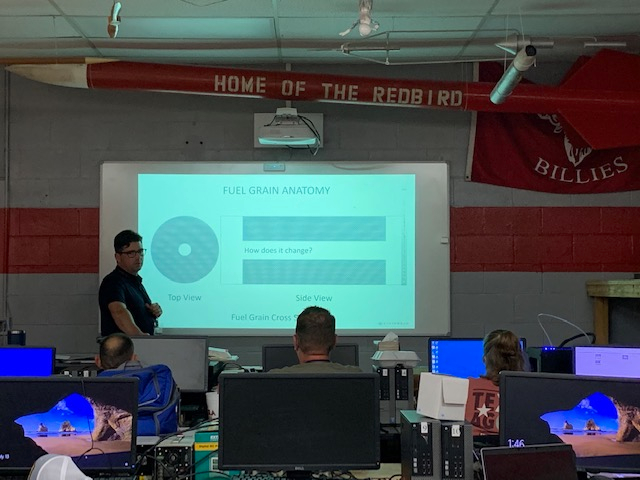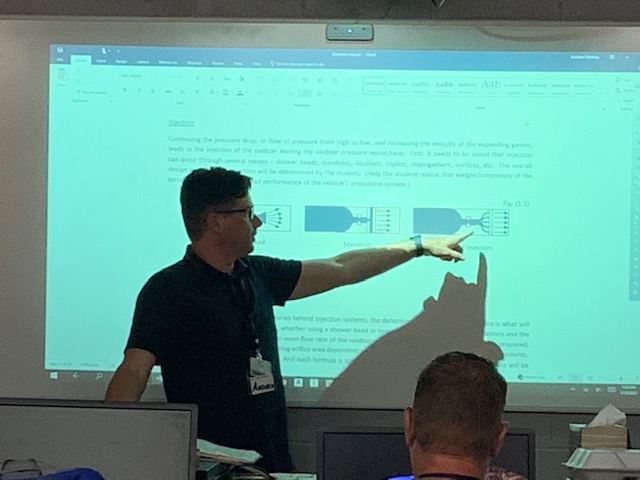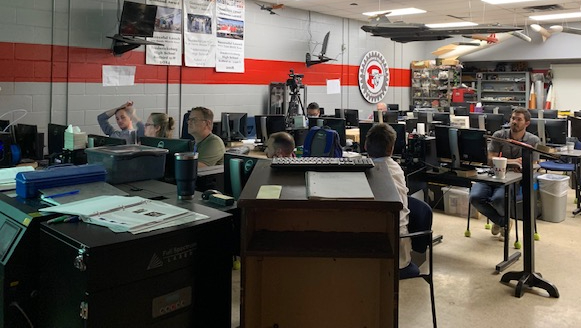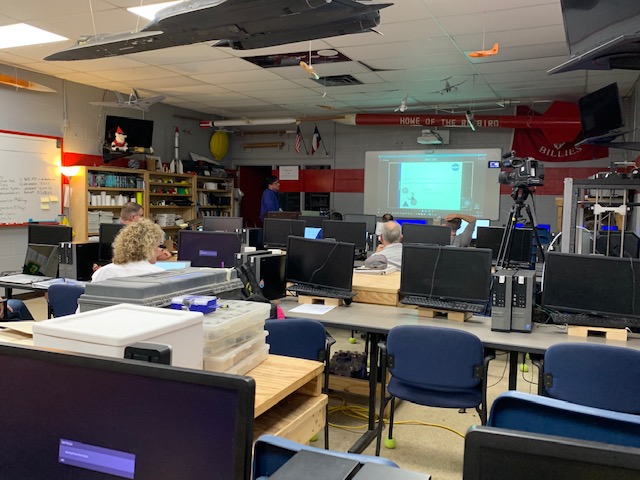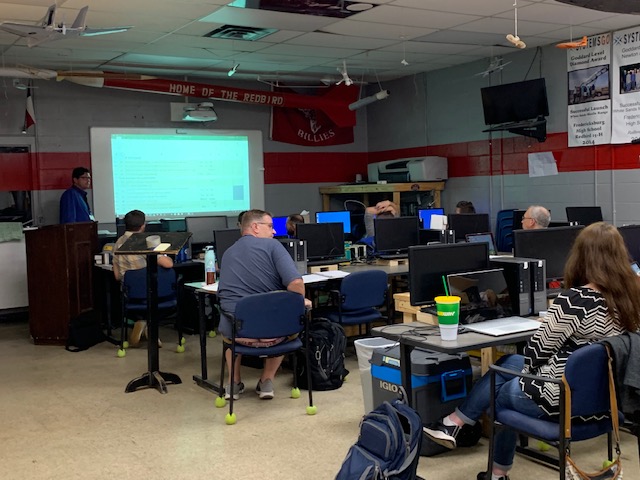Today’s lesson was concerning the Anatomy of a Rocket. Quite honestly this was not a good class to come into the middle of and expect to keep up.
The best example I can give of how this went is as follows. My family often plays a game at holidays, we call “Pass Around Pictionary.” To sum it up, each person has a piece of paper on which they draw a picture, then fold the paper to hide the picture, and then they pass it to the next person to describe the picture in words. This process continues going back and forth from picture to words each time the paper is passed, and each person can only see what the person before them drew or wrote and must describe using the opposite action.
Now fast forward to today. I walk into a high level rocket training class just as the main lecture on how to design these vehicles has ended, and a student/teacher is selected to go to the board and draw/design a rocket with the help of his classmates. Not only are they drawing this vehicle as they go along, they are problem solving, designing, discussing parameters and components, and redrawing as the thought process changes and develops.


The drawing began simple enough so I tried to draw my own copy picture as they went along. Their board allowed for erasing and changing as they went along. I brought a notebook and an INK pen to class today. It worked well the last two days, but failed me miserably today. I finally gave up on trying to complete the drawing, and went to listing components that I knew were part of a rocket. Needless to say I went from drawing to writing, watching as their diagram continued to evolve.

Incidentally, here is what my drawing and notes looked like.

This too had it’s downfalls, because even though I know a lot of the pieces that go into a rocket, it is mostly the big stuff, like nose cone, tank, fins and fuel grain, and some of the tiny things like O-rings, valves, nuts, bolts, etc.
We were now discussing all the large, small, tiny, unknown and very necessary items. Several factors that effect each of them, their sizes, configurations, placement possibilities, etc. Not to mention the abbreviations, acronyms, and formulas that were being used as descriptors. I definitely need to take this class from beginning to end!!!

One thing is for sure, these teachers were being held to the same standard or higher that the high school students in the program are and they were having to perform, just as they will be directing their future students to do. They were designing and developing a diagram of a rocket that they could look back on later as a working example. Each one was analyzing the possibilities and determining the best, what kind, why that one, and how of it all.
They were thinking through things like injector ports, vents, nozzles, electronics bays and their placements on the vehicles and determining if the design was good. Contemplating if they might need to reach that component later and how they would?
The drawing developed, morphed, changed and was redrawn as questions were put forth and answered. It was amazing to be a part of, but nearly impossible to take notes on and keep track.

Even these pictures really do not do the material or the participation of the working minds, justice. I cannot wait to see where they are tomorrow! Here are two more that were part of their discussion. I will let you fill in the captions for these.
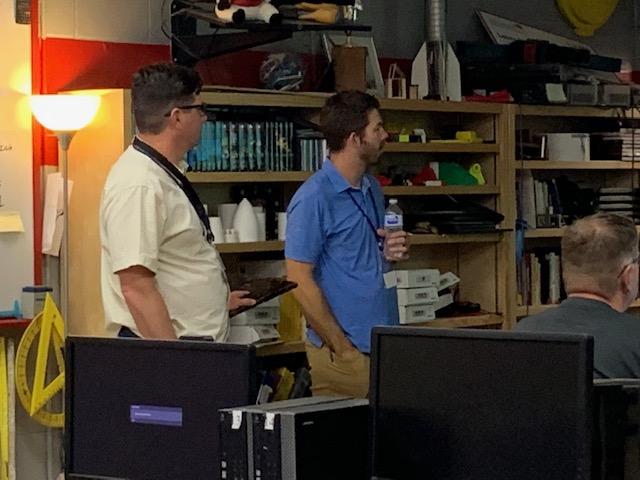

We did have a few new faces today. SystemsGo Executive Director, Scott Netherland; Board President, Doug Kimbrell; and past graduate of the program, Robert Sanchez were all in attendance. At the time that I was there, Scott and Doug were observing. Robert said he was fixing one of the school’s 3D printers so that he could use it to fix the other 3D printer.

Until tomorrow, if you are not dreaming of designing, building, launching and chasing rockets, you obviously have not hung out with this crew enough!
www.systemsgo.org as always is the place for more information on this program. You may also email them at info@systemsgo.org .Take the time to get your school involved, the future of your students will be greatly benefited.

#RideTheSky! #Rockets2022 RocketSeason!





